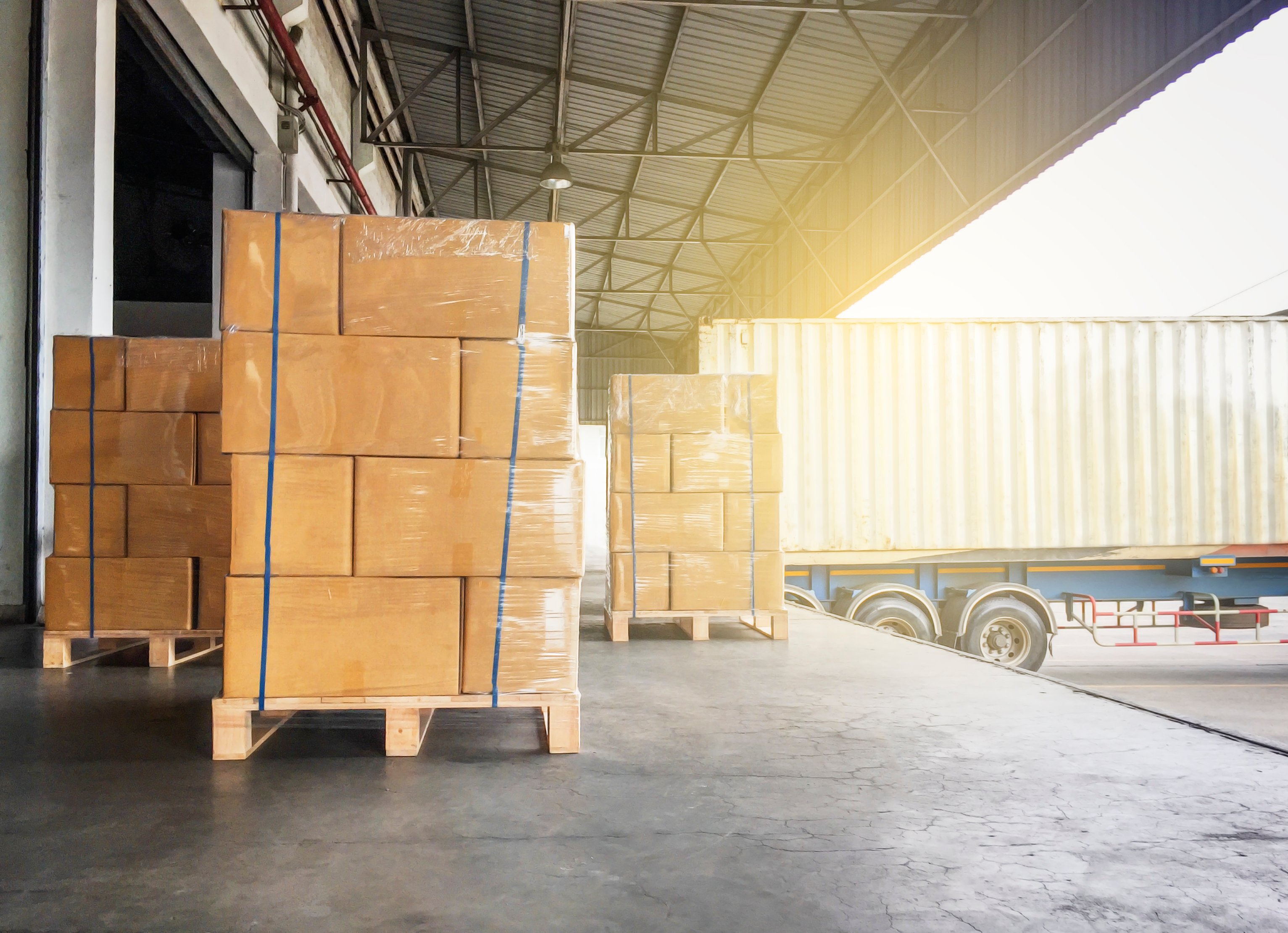
Historically, e-commerce merchants ship products through postal and parcel carriers like the United States Postal Service (USPS), FedEx, and UPS. However, if you sell large items on your online store, the weight and dimensional restrictions of these shipping networks may exclude them as options. This is why many e-commerce stores that sell large products are turning to less than truckload (LTL) freight. LTL freight has fewer dimensional restrictions, and it can be more economical when the weight of a shipment weighs 150 pounds or more.

As beneficial as LTL is, like other freight options it has its own set of risks. Shipments can be lost or suffer damage while in transit or during delivery. When it happens, it can disrupt business operations, cause you to miss supply deadlines, or strain relationships with customers. Luckily, it doesn't happen very often. When it does, your recourse with the carrier will differ depending on the carrier's limits of liability.
In this article, you will learn all about LTL carrier liability and its limits.
In the shipping industry, freight companies carry a degree of responsibility for any loss, damage, or delays in the arrival of shipments. This is referred to as carrier liability, and there are also applicable limitations and exceptions, such as natural disasters, acts by public authorities, or negligence on the shipper's part.
It's important to note that when loss or damage occurs, it's up to the shipper to prove that the carrier is liable for it. To receive compensation, you must be able to prove that your shipment was in good condition when it was given to the carrier. If your goods are damaged in transit or aren't delivered at all, you have nine months from the date of delivery or the intended date of arrival to make your claim.
If the delivery notes indicate that the goods were received damaged, it's important to notify your carrier immediately. After this, the carrier should acknowledge the claim within 30 days and respond to the shipper no later than 120 days.
In the US, the Carmack Amendment can be considered as the origin of carrier liability. It was put in place in 1906 and was intended for rail and water carriers. The motivation behind the amendment was to establish the rights, responsibilities, and liabilities that freight carriers and shippers bear in the event of a loss.
LTL limits of liability vary from one carrier to the next and are determined based on the freight class, packaging, commodity type, and other conditions. In addition, goods that haven't come directly from the manufacturer attract lower liability coverage. And, freight carriers only cover up to a certain dollar amount per pound of cargo. In many cases, the limits of liability provide coverage that won't match the value of your cargo.
If the items in your shipment are new, the coverage issued depends on the freight class. The amount of coverage usually ranges between $1 and $2 per pound, but for the highest freight classes, it can be as high as $25 per pound. Regardless of the freight class, coverage for used goods is much lower and starts at $0.10 for every pound.
If you file a claim and your freight carrier accepts the evidence you provide, they will cover the cost of repairs (if applicable) or reimburse you for the manufacturing cost. However, carriers often try to reduce their payouts as much as possible. Don't be surprised if you receive an amount less than the limits of liability suggests.
Limits of liability are a ceiling on what the carrier may provide you in compensation in the event of a loss or damage claim. It's not a promise to pay that amount if a claim is approved. You accept the ceiling limit and agree to receive a lessor amount when you tender your shipment. If your carrier pays a lessor amount, it should provide you with an explanation for why.
There are many factors to consider when choosing LTL freight shipping for e-commerce. These include:
One of the biggest mistakes people make when choosing shipping for their e-commerce store is focusing on the prices alone. One factor that is frequently over looked is the carrier's limits of liability. The limits of liability differ greatly between carriers. It's quite common to see significantly lower limits of liability offered by budget carriers. A lost or damaged shipment can wipe out or exceed the savings you were expecting if you use the carrier with the cheapest quote and the lowest limits of liability.
It's unlikely that you'll find an LTL carrier with limits of liability that are sufficient to cover the full value of your shipments. Regardless, favoring the carrier with the highest limits of liability may be the deciding factor, particularly if there isn't a significant difference in price or the other factors you're considering.

Freight insurance, also known as goods in transit insurance or cargo insurance, is additional protection you can take to protect your shipment. Unlike carrier liability, you'll incur an extra charge, which is calculated based on the value of your freight.
Whereas carrier liability only offers protection to a certain degree, freight insurance will reimburse you for the full value of your shipment. Also, you're only required to prove the value of the loss or damage to your products. Successful claims are usually paid within one month.
The ideal scenario for any business is to never have to deal with a freight claim. They result in a loss of money and time. Although you can't eliminate the risk entirely, there are some things you can do to reduce risk and increase your chances of receiving compensation in the event something happens.
In-transit damage is one of the primary causes of disputes between carriers and shippers. It is your responsibility to ensure that your cargo is packed well, and all the packaging guidelines of the carrier are observed. If not, your cargo will be at a higher risk of being damaged, and the carrier may have grounds to deny their liability.
Nearly all LTL freight carriers can send you email or SMS text messages to notify you of the shipment's progress. If your carrier doesn't have this ability, then its website should have a shipment status page that you can use. Status updates typically inform you when the shipment:
Being aware of the shipment's status can alert you of delays that may indicate that your shipment is at greater risk. You should pay closer attention to shipments that aren't adhering to the expected delivery schedule. Notifications will also keep you informed of when you need to be prepared to receive the shipment.
The receiving dock or location is the first opportunity to see damage that occurred while the shipment was in transit. It's vitally important that the person receiving it knows how to receive an LTL freight shipment. If the shipment isn't received properly, the LTL freight carrier will deny your claim. Make sure the receiver knows to:
When carrier liability claims are being assessed, the actions that take place during shipping and receiving play the most significant role. Therefore, it's crucial to establish strong practices that will be enshrined in your company's shipping and receiving culture. Be prepared for loss or damage claims so you can file the claim promptly and be in the best position to receive compensation from the carrier.
Eniture Technology specializes in helping e-Commerce merchants grow by providing useful information, digital marketing services, off-the-shelf apps that solve common problems, and custom programming services. Please contact us if you need help growing your online business or implementing the concepts presented in this blog post.
If you are interested in offering LTL freight as an option on your online store, take advantage of our free guide on LTL freight.
GET IN TOUCH
Phone: 404.369.0680
info@eniture.com
320 W. Lanier Avenue
Suite 200
Fayetteville, GA 30214
© 2015 Eniture LLC. All rights reserved.